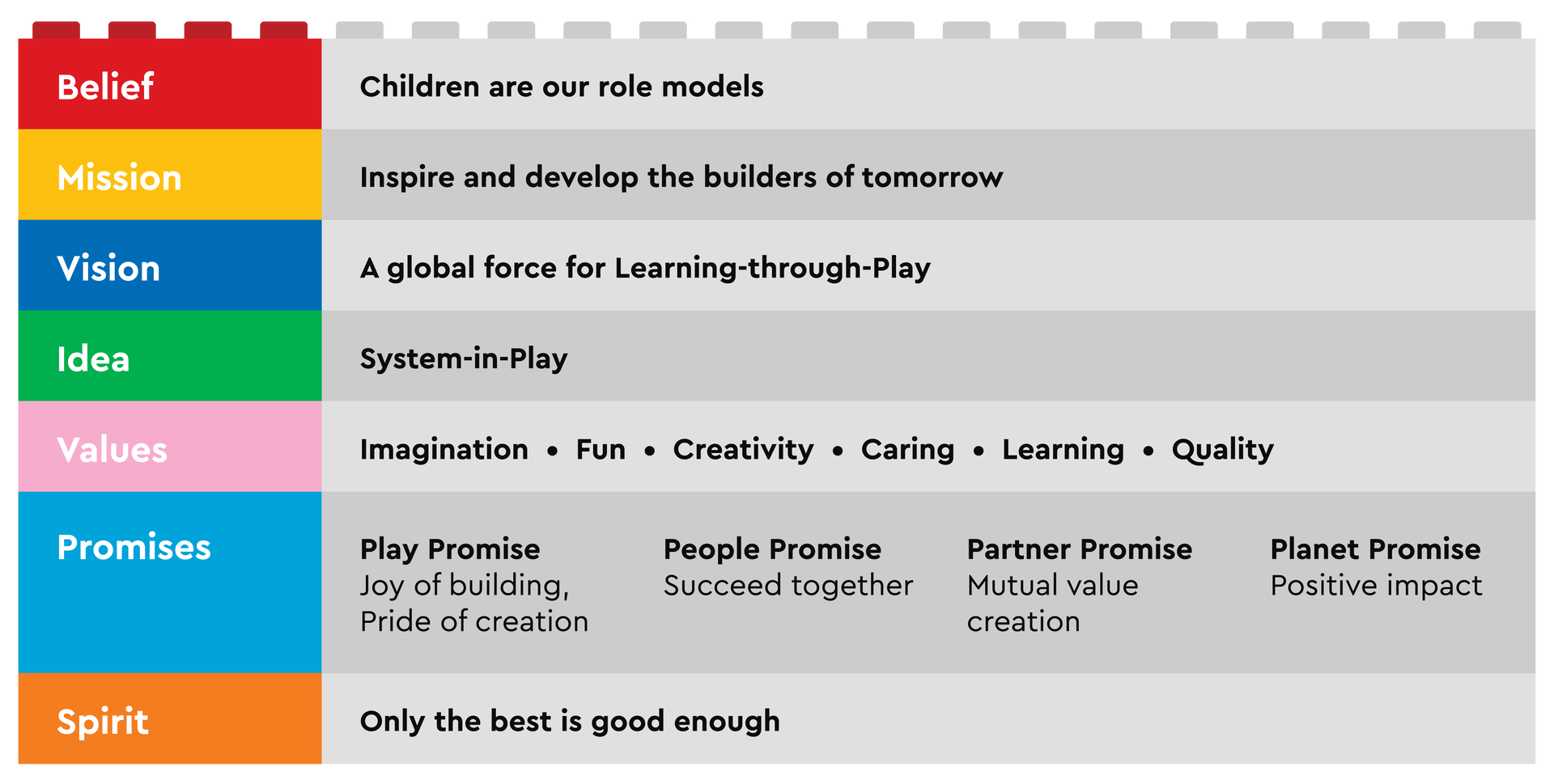Lego
Rebuilding the business with “creative play”
Lego almost died. Under pressure from an avalanche of digital games, the classic toy brand responded by seeking to imitate its challengers, losing sight of what made it special.
In 1947 Ole Kirk Christiansen bought the first plastic-injection moulding machine in Denmark to start manufacturing plastic toy bricks. Within 4 years he had patented the stud-like bricks that locked together as systems.
For the next 56 years, Lego seemed the perfect company. An iconic brand, the business was still run by the family, grandson Kjeld Kirk now the CEO. However in 1993, sales slowed dramatically, blamed on everything from low-priced Chinese imitations to kid’s new love of computer games. Lego responded with wave after wave of innovation. Jumbo sized for toddlers, pocket sized for girls. Computerised “Technics” range for the most inventive, and video games for the lazy. But kids were growing up faster.
Licensing of Star Wars and Harry Potter ranges tapped into trends, but were short-lived. It sought out new spaces – fanatical about finding uncontested “blue oceans” rather than more competitive “red oceans” – and encouraged diverse creativity. Clothing and jewellery, theme parks and education added to the brand’s extensions.
Yet in 2003 Lego almost went bankrupt. The unbridled innovation had lost a sense of direction, trying to be too many things to too many people, forgetting what it was really about – “playing well” as the brands origins in the Danish phrase “leg godt” translate.
The family ceded control to a professional CEO, Jorgen Vig Knudstorp, who brought tighter focus to the portfolio, and added discipline to the creativity. He sold the theme parks, moved out of the head office, and outsourced production to Czech Republic and Mexico.
However Knudstorp still believed in innovation, it just needed discipline. It wasn’t about blazing a trail into every market, but focusing on the best opportunities for profitable growth. Investment focused on the ideas which fitted best with the core brand, and delivered a long-term return. By 2006, the world’s third largest toy maker started growing again, with profit growth double revenue growth, always a healthy sign.
Brand Values
- Imagination
Free play is how children develop their imagination – the foundation for creativity. Curiosity asks WHY and imagines possible explanations. Playfulness asks WHAT IF and imagines how the ordinary becomes extraordinary, fantasy or fiction. Dreaming it is a first step towards doing it.
- Creativity
Creativity is the ability to come up with ideas that are new, surprising and valuable – and it’s an essential 21st century skill. Systematic creativity is a particular form of creativity that combines logic and reasoning with playfulness and imagination.
- Fun
Fun is being active together, the thrill of an adventure, the joyful enthusiasm of children and the delight in surprising both yourself and others in what you can do or create. Fun is the happiness we experience when we are fully engaged in something that requires mastery, when our abilities are in balance with the challenge at hand and we are making progress towards a goal.
- Learning
Learning is about being curious, experimenting and collaborating – expanding our thinking and doing, helping us develop new insights and new skills. We learn through play by putting things together, taking them apart and putting them together in different ways. Building, un-building, rebuilding, thereby creating new things and developing new ways of thinking about ourselves, and the world.
- Caring
-
Quality
For us quality means the challenge of continuous improvement to provide the best play material, the best for children and their development and the best to our community and partners. From a reputation for manufacturing excellence to becoming trusted by all – we believe in quality that speaks for itself and earns us the recommendation of all.

Leadership
Be Brave, Be Curious and Be focused
